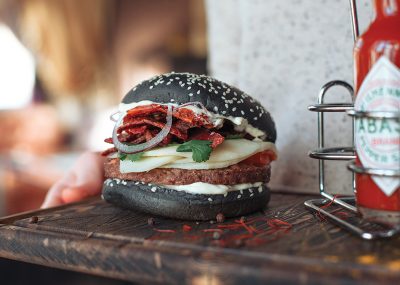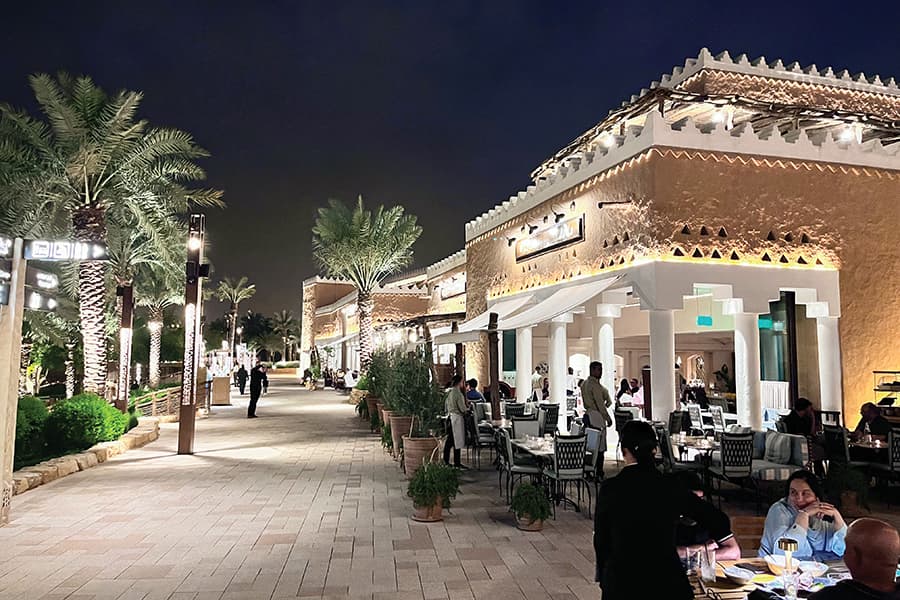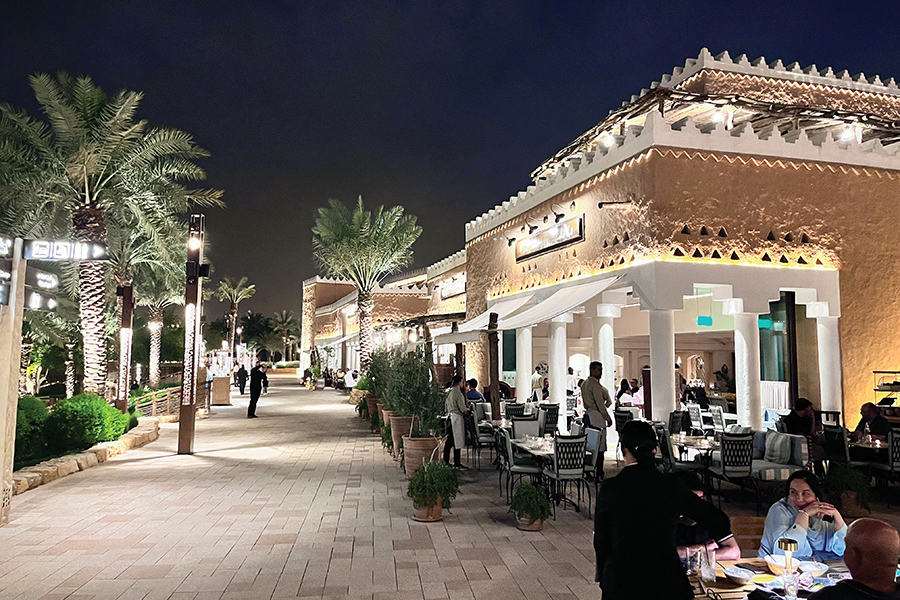CBD food and beverage has exploded this decade as the millennials joined with Gen Y to dominate the workplace. With marriages and mortgages an impossible dream for these younger Aussies, these two cohorts have taken to spending their spare cash on fake tans, designer accessories and the now infamous smashed avo! As a result, the amount of floorspace dedicated to hospitality uses in our two largest cities has burgeoned to almost 50% of all ground floor retail GLA, according to council floorspace use surveys!
But as anyone that’s ever studied the Gold Rush has learnt, there comes a time when the land has been mined for all its worth and pickings become slim. With retail sales plummeting and foot traffic declining, many CBD centres and commercial buildings containing foodcourts and casual dining precincts are starting to feel the pain. Abatement requests are rising and tenants renewing F&B leases are negotiating from a strong position for rent decreases and other incentives. In addition, most progressive professional services firms like the law firms and banks are consolidating into single buildings and including a sophisticated degree of in-house cafés, pop-ups and hospitality options, which effectively is a further competitor to the food at the base of CBD buildings.
Having worked with many centres through the GFC downturn from 2007 – 2011 and then back up through the boom years from 2012 – 2017, we have tested and measured several strategies for securing the Food Catering MAT despite challenging times.
Here we share our Top 3 insights as to how to support your existing F&B tenants to stabilise their turnovers (and your rental income) when customer numbers are down.
1. Provide customer service training
One of the points of difference for CBD centres to all other shopping environments is the high frequency of regular customers. Fifty per cent of office workers buy their lunch each day and an even higher percentage buy at least one coffee a day. Getting out of the office and being recognised and greeted by name has a big impact on customer loyalty and the average amount a customer will spend on their transactions.
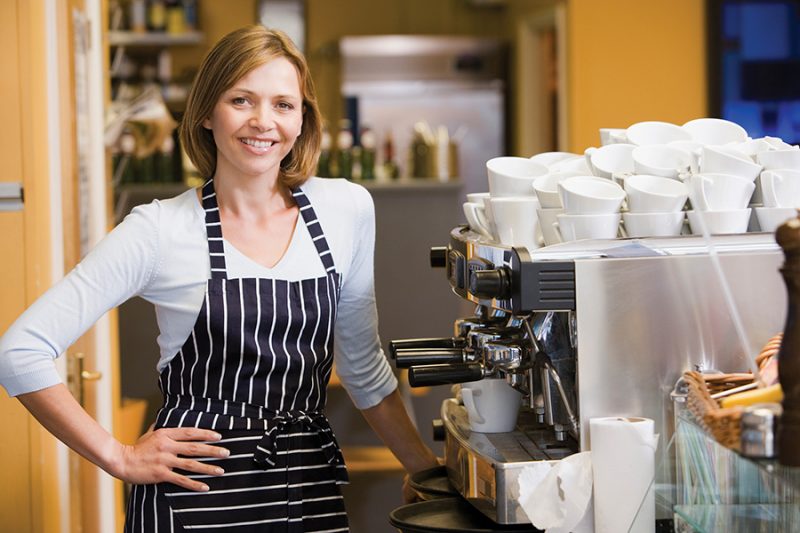
Personalisation, upselling and cross selling can add 15% to MAT
One of the first recommendations we ever make when running a sales improvement program with centre retailers is training the staff to remember names and orders and rapport building skills.
That simple phrase we all know “Would you like fries with that” is actually responsible for driving about 15% of McDonald’s sales. Often foodservice staff are reluctant to ‘sell’ but if it’s re-positioned to them as providing great customer service – making sure a customer has all they need for a pleasant lunch, the uplift can be surprising. Upselling and cross selling is a ‘low hanging fruit’ sales growth strategy when customer numbers are dwindling. An easy 10 – 15% MAT increase.
2. Review your seating configurations
Another way CBD centres differ to regional, sub regional and neighbourhood shopping centres is the peak trading periods. Where Big Gun and Little Gun centres boom across the school holidays with the food courts packed from 10am to 4pm, CBD centres peak from just 12.30pm – 1.30pm Monday – Friday only. One of the simplest ways we have been able to increase the MAT across an entire food court is to review the seating productivity at the peak times. The more available seats there are then the more customers can be accomodated. Word spreads through office corridors quickly as to which CBD food courts are easy to get a seat and they avoid those where it’s more a game of musical chairs.
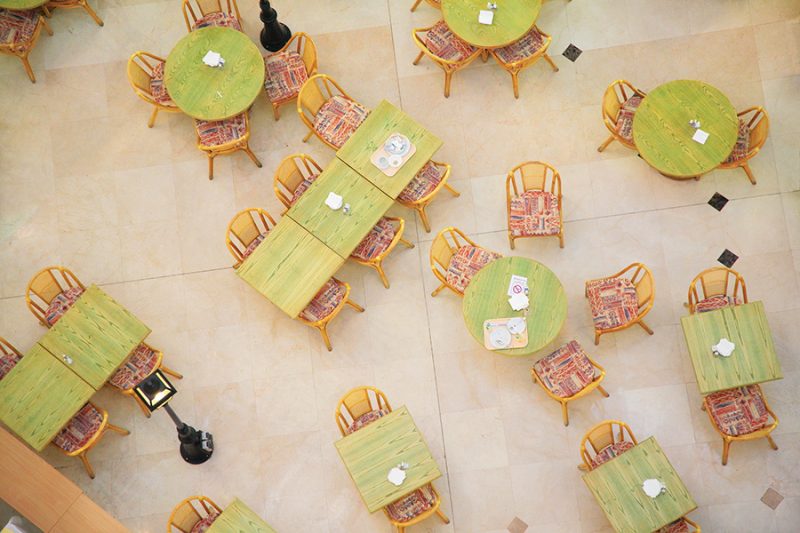
Many food precincts underperform because no science was put into the seating configuration
Our work has proven that it is not the number of seats that effects food court performance in the CBD – but the configuration, getting the right mix of table tops – singles, deuce, quad and communal so that there are minimal ‘free’ seats. One of our best successes was when we worked with a CBD food court that had 34% ‘free seats’ during the peak period – effectively every third seat was not being used. You know what it feels like when you see one person sitting at a table for four but it feels too uncomfortable to share that table so you avoid the table altogether. Without adding any extra seats, we worked on the configuration and reduced the free seats down to 17%. This meant there were 68 extra seats available for customers, allowing the food court to service more than 200 extra people per hour – a simple win.
3. Get tenants’ menus reviewed
Have you noticed colleagues around you eating poke, your new iGen co-worker slurping an iced espresso through a bamboo straw or having fetta on their hot chips? These menu items weren’t around five years ago so why do centres and retailers leave the same permitted menu running for the term of a five or seven-year lease? In our experience, food precincts achieving constant MAT growth engage with food consultants each year to review and update permitted menus to keep retailers connected to customers and taking advantage of market trends. As an important side benefit, improving margin through a well considered menu upgrade can also help cushion retailers in a period of soft sales growth.
- Menus need updating regularly to include new trends like loaded fries and activated charcoal burger buns
- Menus need updating regularly to include new trends like loaded fries and activated charcoal burger buns
And it’s not just menus, have a look around and see how many hand written signs have crept into your local sandwich bar or noodle shop over the term of lease, have those pots of fake plants hanging from the rafters been cleaned lately, even more common we find is the Christmas decorations still dotted around the outlet and it’s August! Five years is a long time in food. Store blindness and retailer fatigue are real problems and investing in your sitting retailers is one of the smartest ways to maintain food catering income in the CBD.
If we were to translate the old Chinese proverb that starts “Give a man a fish and you feed him for a day” into CBD Food Hall speak it would read “Give a retailer rent abatement and you save him for a day, teach a retailer new F&B skills and you secure your income for a lifetime.”




